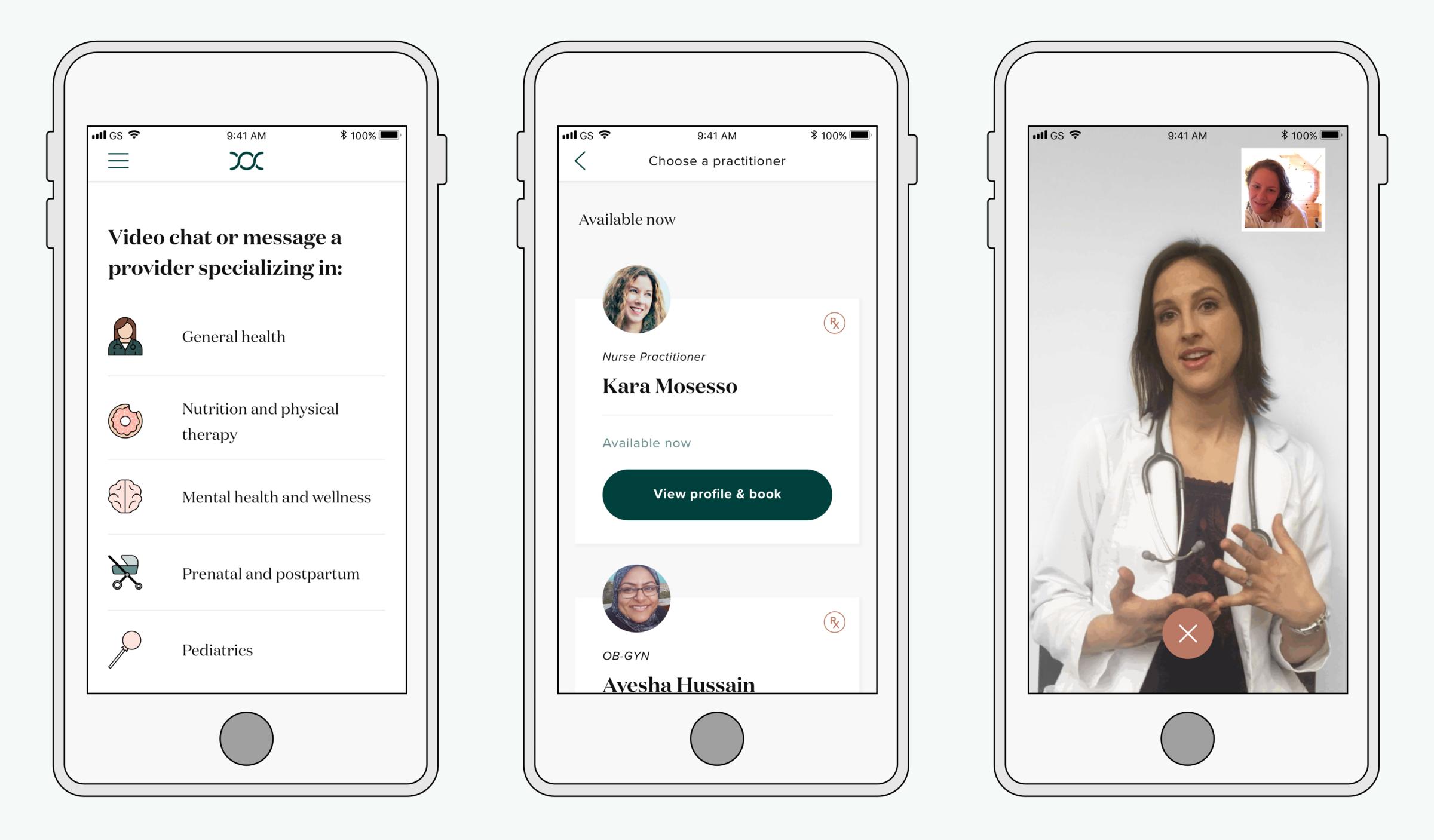
In The Boss, women share how they became successful and the lessons they learned along the way.
Everyone needs healthcare. Yet, to the surprise of many people I speak with, both healthcare providers and the consumers interacting with the healthcare system are overwhelmingly female.
Approximately 80% of healthcare decisions are made by women, who commonly guide care not just for themselves, but also for their children and families. Likewise, the majority of healthcare jobs — including doctors, nurses and technicians — are held by women. Given this, it’s worth a double-take that the system is run almost entirely by men. Only about a fifth of healthcare executives are women.
I’m part of a small percentage of women who run digital health startups. My company, Maven, a digital clinic for women, bridges gaps in healthcare by providing on-demand access to a network of over 1,000 women’s and family health providers. Patients can see Maven Practitioners either by video, by text or in-person. We have served over 100,000 patients since we launched a few years ago, and I’ve seen firsthand how gender imbalance in healthcare boardrooms negatively affects care for women — and also what we can do to change things.
When I started Maven in 2014, the inspiration was all around me: I was working in venture capital in London covering the emerging digital health sector. It was around the same time that my friends started having kids and I noticed the gaps in care that exist at every life stage, but appear to get bigger when women start a family.
Why, for example, aren’t there easier ways for women to navigate fertility problems, get postpartum care or access birth control? Why is seeing a good doctor so difficult and inconvenient that getting a prescription for something like a urinary tract infection requires putting your entire life (and your family’s life) on hold? How is it even possible that the United States has the worst maternal mortality rate in the developed world?

I remember one particularly shocking story: A woman suffered a miscarriage at seven months and was forced to deliver her stillborn baby. After the procedure, she was then placed in the postpartum section of the hospital alongside several new mothers and their babies. That experience sent her into a crippling depression, and she was unable to get support due to the lack of robust mental health coverage by her insurance company. This gap in care had wide-ranging repercussions for her at work and at home.
This clearly was not a “user experience” designed by a woman. As an aspiring entrepreneur, I knew I could do better. So I quit my job in early 2014, rallied a small but mighty team who shared my urgency for changing the status quo, and started building a product and a network of providers from scratch. We launched Maven to the consumer market about a year later.
I’m proud of many things that my team and I built in the short time since launching Maven. Two of them stand out. First, it was a no-brainer to build a network with a wide range of specializations to cater to the specific needs of our users. A “typical” new mom might work with an OB-GYN, Pediatrician, Lactation Consultant, Women’s Mental Health Provider and Women’s Health Physical Therapist all in the same week. All of those providers are represented in Maven’s network, work together digitally and provide referrals to one another. And 98% percent of the practitioners in our network are women.
Second, Maven’s family benefits platform for companies helps pregnant employees and soon-to-be parents with fertility, pregnancy, postpartum and return-to-work issues. Working families get unlimited access to the Maven network, as well as a maternity or fertility concierge to help them navigate everything from disability benefits to childcare options to egg freezing discounts. The draw for companies? They get better retention of valuable employees and a reduction of costs in one of the most expensive areas of care.
Raising money for this business came with its challenges. It’s no secret that the venture capital industry is dominated by men. In our early fundraising rounds, it was challenging to get male investors excited about something that many of them couldn’t personally relate to. But Maven has now raised over $15 million in three years. At times it was frustrating, but I feel fortunate that things are now moving so quickly — especially since there’s still so much work to do.
As a country, we have a long way to go to improve women’s access to quality healthcare, but I’m more optimistic than ever that we’ll get there. The future of women’s health is inextricably linked to the future of healthcare. And the future of healthcare is moving in a direction that favors value-based care and consumer choice. Women, as the core consumers and purveyors of healthcare, must be central to this process. By listening to the many unmet healthcare needs of Maven’s patients and other women, and by responding through product innovation, we can bring a sorely-needed focus to women’s health.
More Must-Reads from TIME
- Donald Trump Is TIME's 2024 Person of the Year
- Why We Chose Trump as Person of the Year
- Is Intermittent Fasting Good or Bad for You?
- The 100 Must-Read Books of 2024
- The 20 Best Christmas TV Episodes
- Column: If Optimism Feels Ridiculous Now, Try Hope
- The Future of Climate Action Is Trade Policy
- Merle Bombardieri Is Helping People Make the Baby Decision
Contact us at letters@time.com